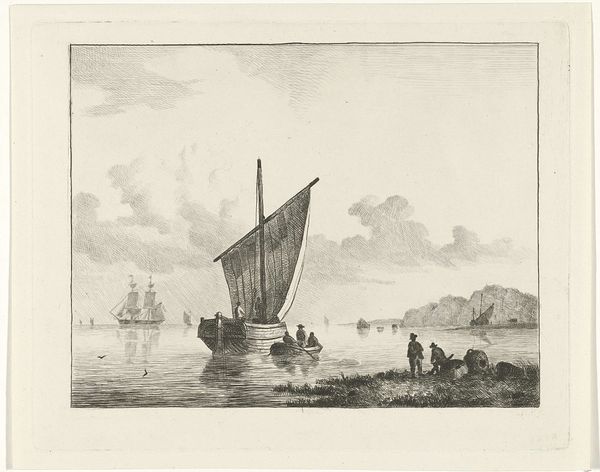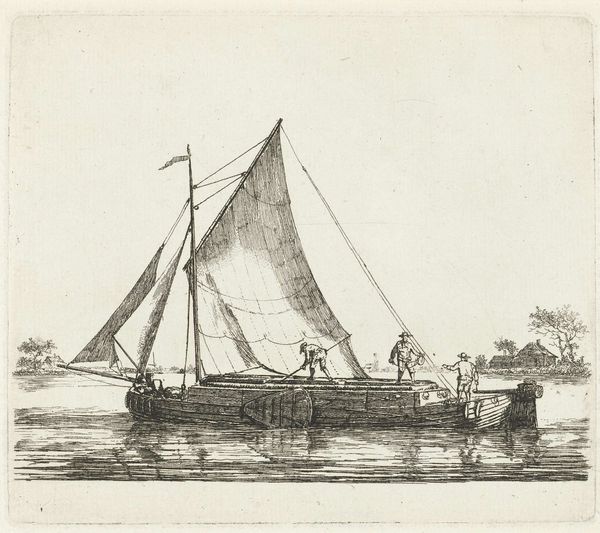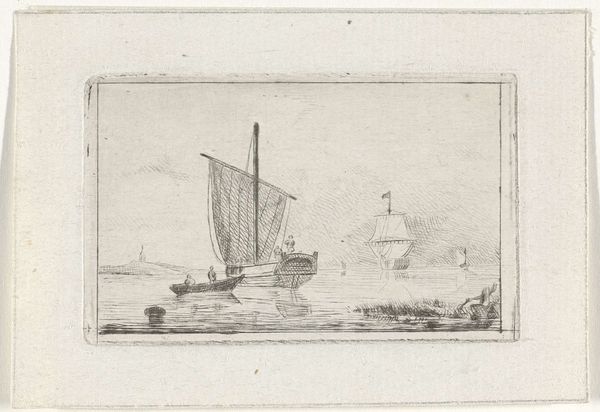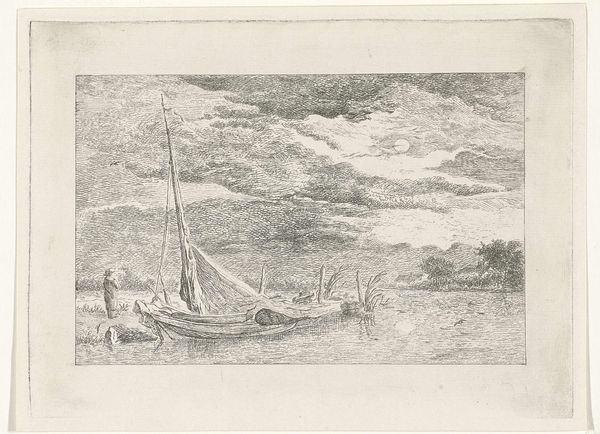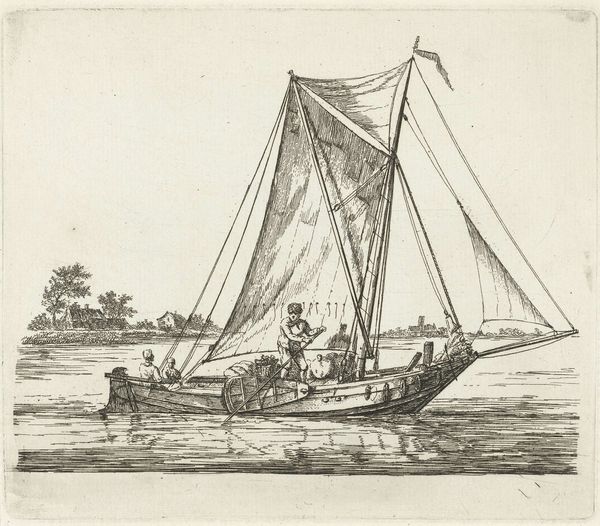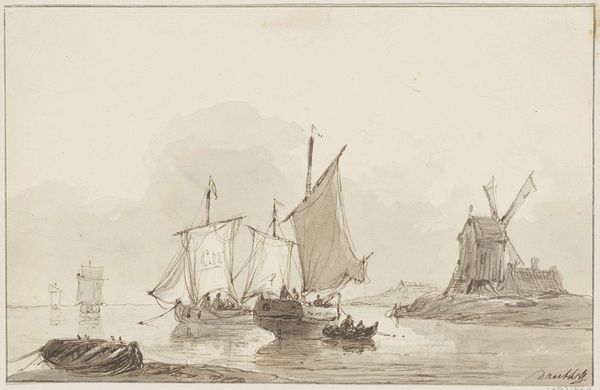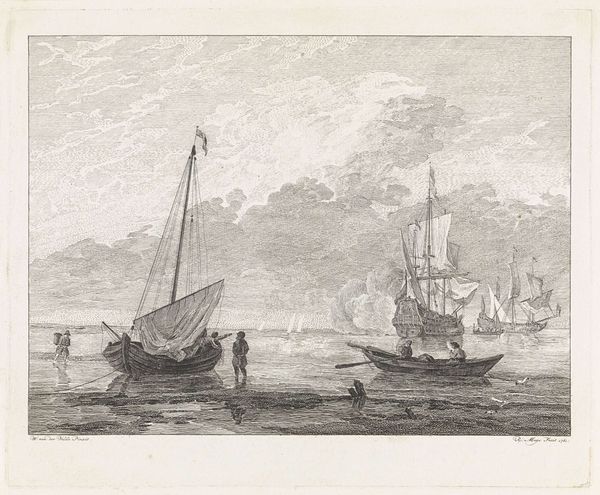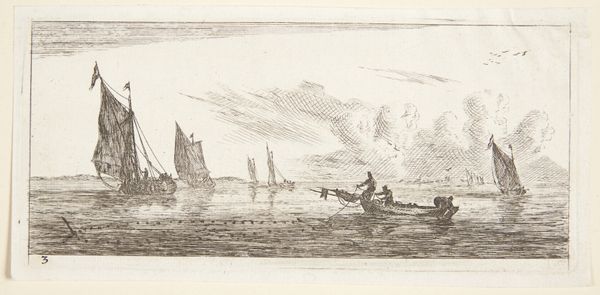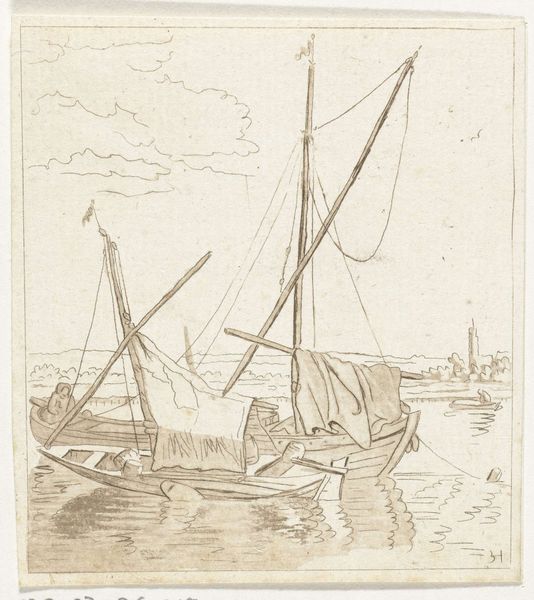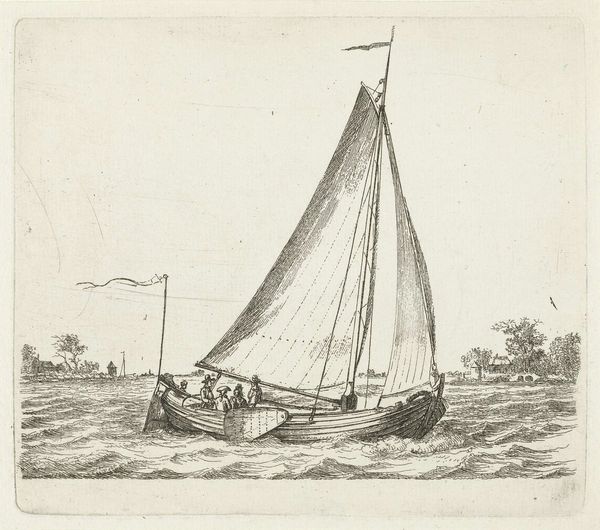
#
quirky sketch
#
ship
#
pen sketch
#
pencil sketch
#
old engraving style
#
etching
#
personal sketchbook
#
sketchwork
#
pen-ink sketch
#
sketchbook drawing
#
storyboard and sketchbook work
Dimensions: height 50 mm, width 81 mm
Copyright: Rijks Museum: Open Domain
Editor: This is Willem Gruyter Jr.’s "River View with Sailing Ship," likely made between 1832 and 1880, now hanging in the Rijksmuseum. It's a delicate etching; a quiet scene despite the ships. What strikes you about it? Curator: What immediately grabs my attention is the process itself. Look at the lines, the etching, the physical act of creation. Each stroke is a trace of the artist’s hand, and each choice reveals a decision about labor and production. The material, the plate, the acid - all leave their mark. Editor: I see that now, the detail in each individual stroke! But how does that affect the scene itself? Curator: It moves beyond simply depicting a river view. The etching process itself becomes part of the content. Consider the cultural context. Etchings were often reproduced for wider consumption. Were these images aimed at an elite audience, or were they meant to be distributed more broadly, contributing to a shared visual understanding of the Dutch landscape? Editor: Interesting. So you are saying it may be an "everyman" landscape, made using printmaking as a mode of distribution? Curator: Exactly. The lines could indicate how people related to landscape through work, travel, trade... Even the level of the tide and river are indicative of labor. Are these purely artistic explorations, or are they documents reflecting labor, commodity, and value? Consider where he sourced materials and how global trade impacted production. What can this print, with its layered history of material, labor, and circulation, tell us about the larger systems at play? Editor: So looking closely at the materials and process gives us clues to how this image may have played a role in the social and economic landscape of its time. That is pretty mind-blowing! Curator: Indeed, and that’s the fascinating thing about materialist approaches to art history: they encourage us to move beyond just aesthetic appreciation and examine art as a product of labor and social forces.
Comments
No comments
Be the first to comment and join the conversation on the ultimate creative platform.

